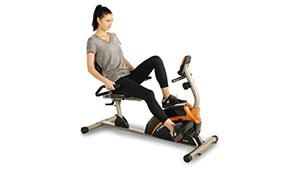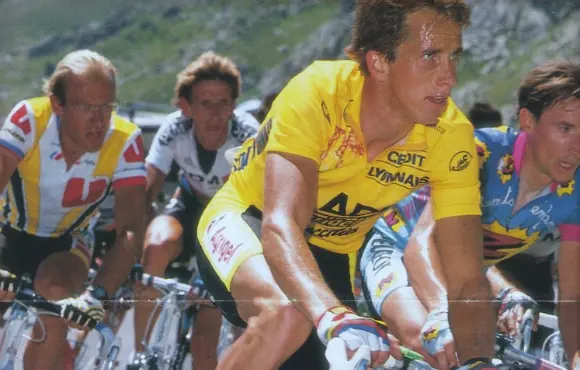
On December 31, 2014, Barbara Ortiz was at a low point. The Tucson, Arizona resident had recently been through a divorce, was overweight and had lived her whole life with chronic asthma—all of which were taking significant tolls on her emotional and physical health.
While most people set smaller and more achievable New Year's resolutions, Ortiz felt she would need something more extreme than simply 'eating healthfully' or 'working out more' to take back her life. The next day, she began searching for a bike—she hadn't ridden one in decades—and committed to a daunting goal: Completing the 55-mile Tour de Tucson bike ride that November in pursuit of fitness and self-confidence.
RELATED: The 4 Biggest Mistakes We Make When Setting New Year's Resolutions
Although Ortiz initially doubted that someone who "struggled to climb a flight of stairs" could tackle the Tour de Tucson 11 months later, setting big audacious goals is a proven way to radically improve your life, says Dr. Simon Marshall, performance psychologist for the BMC Racing team.
She followed the examples of her best friend and ex-husband, who had both ridden the Tour after signing up with a program called the Diabetes Community Empowerment Project. The group provided access to health professionals to help reach her goal—things like re-learning to ride her bike and developing a diet and training plan—and to hold her accountable in her pursuit of it.
Then Ortiz identified several smaller goals to help her accomplish her main objective: She wanted to lose 60 pounds, be able to ride 55 miles straight by November and gain confidence in her body. By the time Thanksgiving rolled around, she was 72 pounds lighter and had ridden over 75 miles straight in the more challenging edition of the 2015 El Tour de Tucson. She was so confident in her ability to keep improving that she signed up for the 106-mile ride in 2016.
If you want to conquer the seemingly impossible this year like Ortiz and change your life for the better, Dr. Marshall offers five key steps for setting and achieving your most ambitious goals and New Year's resolutions.
Pick a Meaningful Goal
Ask yourself: Why am I doing this? Do you want to change your health, your body, your relationships or something else? Identifying the root of what you're trying to change will help you focus your ambitions around it. "The mere thought of the goal should leave you feeling excited and nervous at the same time," says Marshall.
Assess Your Resources
Put aside money or plan for the necessary purchases you will make and identify ways to slim your existing budget if these resources are costly. Then, figure out which daily habits could be eliminated to make room for working toward your goal. Skipping your Sunday afternoon Netflix binge will open up time for your long ride and maybe even some meal prep for the week ahead.
Establish a Reliable Support System
Tell people about your goal: Pick a reliable friend or friends and tell them what your goal is and why it is important for you to achieve it. They can help hold you accountable. Marshall called this a "commitment device." If your goal demands it, seek out people or resources that can offer expert support and the knowledge you need to succeed. This might mean getting a coach for training and diet advice, or finding a bike shop that can help you find necessary gear, provide maintenance help and introduce you to other cyclists chasing goals.
RELATED: 7 Mistakes You Make When Getting Back in Shape
Set Process Goals
Select SMART goals (Specific, Measurable, Achievable, Relevant and Time-dependent). Marshall says that breaking big goals into smaller, more achievable segments will improve your odds of success. This could be losing 5 pounds by February, or riding 20 miles straight by March. Tracking your progress will help you sustain enthusiasm during long periods of training and identify strategies that aren't working. And be sure to reward yourself along the way.
Strategize to Sustain Your Gains
Once you hit your goal (and you will!) start the process over with a new big goal. Perhaps you dropped a bunch of extra weight; to maintain your success, choose a big new goal that requires you to keep the good habits you just developed—for instance, resolve to ride a hilly century. Then think really long term, like where you want to be in five years. This kind of planning helps us find value in the daily struggles we have meeting our goals. For instance, even though Ortiz's big goal was a specific event, her ultimate resolution was an enduring lifestyle change. Focusing on long-term benefits will help you resolve to keep working toward them for the rest of your life.
Read the original article published on Bicycling.com.
 Ready to ride? Search for a cycling event.
Ready to ride? Search for a cycling event.








Discuss This Article